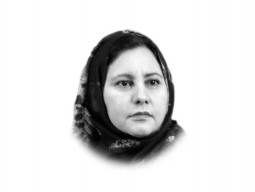
Ill health and poverty have a mutually reinforcing relationship. Our earlier research work provided the empirical basis to establish that ill health in Pakistan is a major trigger that pushes marginal households into poverty, and those already poor into deeper poverty. As one or more members of a marginal household fall sick, the high medical costs induce sale of whatever few assets they have (e.g. livestock) and then they slide into debt. The loss of work days due to illness further compounds their poverty. Conversely, poverty makes people vulnerable to ill health.
Our survey conducted in 10 districts of Pakistan showed that the poor were spending an average of Rs497 per person per year on medical treatment, and losing 90 work days on average to illness. My rather conservative estimates for the population as a whole suggest that currently the medical expenses for the population, as a whole, are at least Rs92 billion annually. The national productivity-related losses are not less than Rs470 billion. Thus, ill health is a significant constraint to both poverty reduction and economic growth.
Pollution-related illnesses that are rampant are cancers, particularly amongst women, post natal infections and amongst both sexes; diarrhoea and upper chest infections. Communicable diseases that are widespread include tuberculosis, various forms of hepatitis and HIV. The country is considered the sixth-largest burden of tuberculosis in the world and 0.5 million cases of malaria occur annually. Last year, there were 5,693 reported cases of dengue fever in Punjab.
The misery of the people suffering from illness is compounded by the serious inadequacy of coverage and quality of health care facilities in Pakistan. This is due to insufficient public sector financial allocation (about 0.53 per cent of the GDP). There is an even greater lack of capacity of most public as well as private sector facilities to deliver efficient and good quality health care.
A large proportion of public sector health facilities suffer from severe shortages of competent medical staff, have inadequate diagnostic facilities, lack disposal facilities for toxic hospital waste, along with the prevalence of dangerously unhygienic conditions under which patients are treated.
I had, in my contribution to the Report of the Working Group for Poverty Reduction and HRD 2010 for the Planning Commission, pointed out that there was a widespread illegal supply of substandard medicines. This fact was ignored and now has been tragically manifested in the deaths of well over a hundred patients in the Punjab Institute of Cardiology Lahore during January this year.
Health is in dire straits: urgent measures are required to sharply increase public sector allocation for this sector, establish medical insurance for the middle classes and the poor and set up institutional mechanisms for coordination between NGOs, public and private sectors to improve the quality and coverage of health care. Some of the initiatives that can be undertaken are: a) Establish a national food and drug administration in collaboration with provincial governments. Its purpose would be to establish and monitor compliance of safety standards in the provision of medicines and also supply of raw, as well as cooked food; b) Establish an urban waste disposal authority in each province that is institutionally linked up with local governments and private sector waste disposal companies; c) A national campaign for safe drinking water and sanitation. It should aim to mobilise knowledge, technologies and local communities for the provision of safe drinking water and sanitation at the village and mohalla levels. We did it in Mohenjo Daro 7,000 years ago, we can do it in Pakistan today.
Widespread ill health is not only accentuating poverty but also sapping the productive potential of the people of Pakistan. Public action is the need of the hour.
Published in The Express Tribune, March 27th, 2012.













COMMENTS
Comments are moderated and generally will be posted if they are on-topic and not abusive.
For more information, please see our Comments FAQ